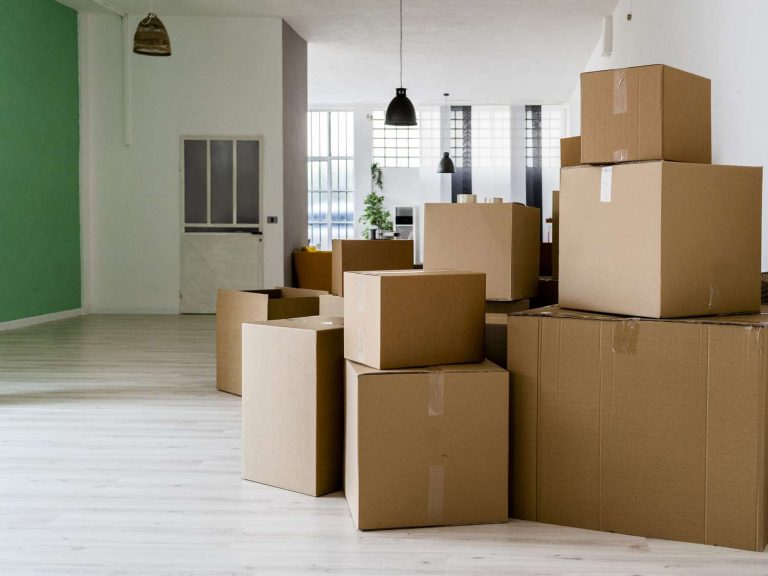
When it comes to moving, the process can be overwhelming—not just because of the emotional ties to your home or the physical labor involved, but also due to the considerable costs that come with it. From hiring moving companies to purchasing packing supplies, the financial burden often adds up quickly. However, there is a simple yet often overlooked strategy to help minimize the financial strain: unpacking efficiently. In fact, the way you unpack can play a pivotal role in reducing both time and expenses. This article will explore how a thoughtful and strategic unpacking process can save you money, while offering practical tips to streamline the post-move experience.
1. The Hidden Costs of Disorganization
The first secret to understanding how unpacking can help you save money is to recognize the hidden costs associated with disorganization during the move. When items are poorly packed or poorly unpacked, it often leads to chaos. For example, if boxes are labeled vaguely or haphazardly, you may spend more time searching for essentials. This lost time not only adds unnecessary stress but can also result in unplanned expenses.
Many people hire professional unpacking services, which can cost anywhere from $300 to $1,000 or more depending on the scope of the move. However, with a little preparation, these costs can often be avoided. The key lies in planning your unpacking process in a way that minimizes the need for additional help, while also reducing stress and confusion.
2. The Role of Proper Labeling and Categorization
A significant part of the unpacking process that impacts your budget is how you’ve labeled and categorized your items before moving. If you take the time to organize your packing in a detailed and methodical manner, unpacking will naturally follow suit, saving you considerable amounts of time and money.
Before the move, sort your items into categories such as kitchenware, electronics, clothing, and cleaning supplies. Invest in a good set of markers and labels, and be specific with your descriptions. Instead of simply writing “kitchen,” specify “pots and pans,” “dishes,” or “utensils.” When it comes to unpacking, having these detailed categories will allow you to quickly locate necessary items. For instance, if you need a set of dishes for a meal but don’t remember which box they are in, vague labels can delay your efforts, resulting in you either re-searching boxes multiple times or hiring help to locate your essentials.
By making sure you’ve categorized everything properly, you can reduce the time spent digging through boxes. This efficiency can save you both time and money, particularly if you’re managing the move without outside assistance.
3. Unpacking in Phases: Avoiding the Overwhelm
One of the most cost-effective methods to approach unpacking is to break the task into manageable phases. Unpacking everything all at once can quickly lead to stress and frustration. Additionally, it’s easy to become overwhelmed by the sheer amount of work, especially if you try to do it all in one go. The result is often a scattered, disorganized home that necessitates extra hours of labor to correct.
By adopting a phased unpacking approach, you’re not only making the process more manageable but also minimizing the chances of needing additional help—whether that means hiring a professional organizer or an unpacking service. Start with essential items, like toiletries, a few changes of clothes, and kitchenware, then move on to less urgent tasks like setting up bookshelves or organizing your wardrobe. This way, you can prioritize your time and efforts and prevent unnecessary spending on rushed decisions.
4. Utilizing Household Items to Cut Costs
Another smart cost-saving strategy involves using household items you already own to assist in unpacking. Instead of buying new storage solutions or organizing tools, look around your home for items that can serve a similar function. For example, old newspapers, towels, and blankets can double as packing materials to cushion fragile items during the unpacking process. Not only does this cut down on the cost of packing materials, but it also reduces waste, which is an eco-friendly bonus.
Similarly, as you begin to unpack, use existing containers, baskets, or boxes to organize your items. A plastic bin can serve as an effective place to store your pantry goods or small appliances. Rather than running to the store to buy new storage containers, repurpose what you already have. By getting creative with your resources, you’ll save money while keeping your home organized.
5. Unpacking as a Family or Group Effort
If you are moving with family members or housemates, unpacking can be a group effort—an opportunity for everyone to pitch in and save on hiring additional help. By spreading the workload across several people, you’ll significantly reduce the time required to complete the unpacking, allowing you to settle in faster. As an added bonus, this collective effort can also build a sense of camaraderie, turning what might otherwise be a tiresome task into a bonding experience.
Additionally, working together means you can tackle different rooms simultaneously. For example, one person can work on the kitchen while another focuses on the living room. This coordinated approach prevents overlap, reduces frustration, and leads to more efficient unpacking, which ultimately translates into fewer costs for you.
6. Strategic Use of Professional Help
While the ultimate goal is to reduce costs, there are times when professional assistance may still be necessary. However, you can still be strategic about this. Hiring professionals to assist with specific, high-priority areas can save money compared to paying them to unpack everything. For instance, if you’re unsure how to properly set up delicate electronics or furniture, it might be worth paying an expert to handle those items while you focus on less complicated tasks.
Another cost-effective move is to limit the time you hire movers for. Many companies charge by the hour, so try to keep your involvement to a few hours at most. If you’ve done the groundwork with labeling and phased unpacking, you can keep their time efficient and your bill low.
7. Dealing with Excess Items: Donating and Selling
Unpacking also gives you a prime opportunity to evaluate what you truly need in your new home. This is the perfect time to go through old items and donate or sell what you no longer use. By reducing the amount of clutter in your new space, you’ll also reduce the number of boxes that need to be unpacked. Less “stuff” means fewer moving expenses, as you’ll be able to downsize your belongings for future moves or storage. Additionally, selling unwanted items can generate extra cash, further offsetting the costs of the move.
Conclusion
Unpacking is often the final and most underestimated stage of the moving process, but it holds the potential to save significant amounts of money when done strategically. By taking the time to categorize, label, and organize your belongings, you can reduce time and stress, avoid the need for professional unpacking services, and minimize the hidden costs of disorganization. With a phased approach, the creative use of household items, and strategic assistance, you can navigate the unpacking process efficiently and effectively—without breaking the bank. Moving doesn’t have to be financially draining; with these unpacking secrets, you can make your transition smoother and more affordable.
You May Also Like
Checklist vs. Relocation: Wh ...
14 March 2025
Top 10 Checklist Tips for Be ...
10 November 2024
Is Your Moving Missing These ...
09 October 2024
Popular Post
Expert Insights on Installing Solar Power Systems
28 October 2025Local Plumbing Expertise You Can Trust in Killeen
22 August 2025Innovative Solutions for Refurbishing Commercial Spaces
14 August 2025How to Improve Your Home with Valuation and Agents
30 April 2025Recent Posts
- Expert Insights on Installing Solar Power Systems October 28, 2025
- Local Plumbing Expertise You Can Trust in Killeen August 22, 2025
- Innovative Solutions for Refurbishing Commercial Spaces August 14, 2025
- How to Improve Your Home with Valuation and Agents April 30, 2025
- The Beginner’s Guide to Design in Home Improvement April 24, 2025
- How to Improve Your Home with Maintenance and Repair April 16, 2025
- Why Your Roofing Strategy Needs a Flat Roof April 10, 2025
Archives
- October 2025 (1)
- August 2025 (2)
- April 2025 (10)
- March 2025 (2)
- February 2025 (7)
- January 2025 (8)
- December 2024 (6)
- November 2024 (6)
- October 2024 (6)
- September 2024 (5)
Categories
- Cleaning & Maintenance (5)
- Gardening & Outdoor (5)
- Home Decor (5)
- Home Improvement (5)
- HVAC (5)
- Moving (5)
- Plumbing (6)
- Real Estate & Property (5)
- Roofing (6)
- Smart Home (6)





